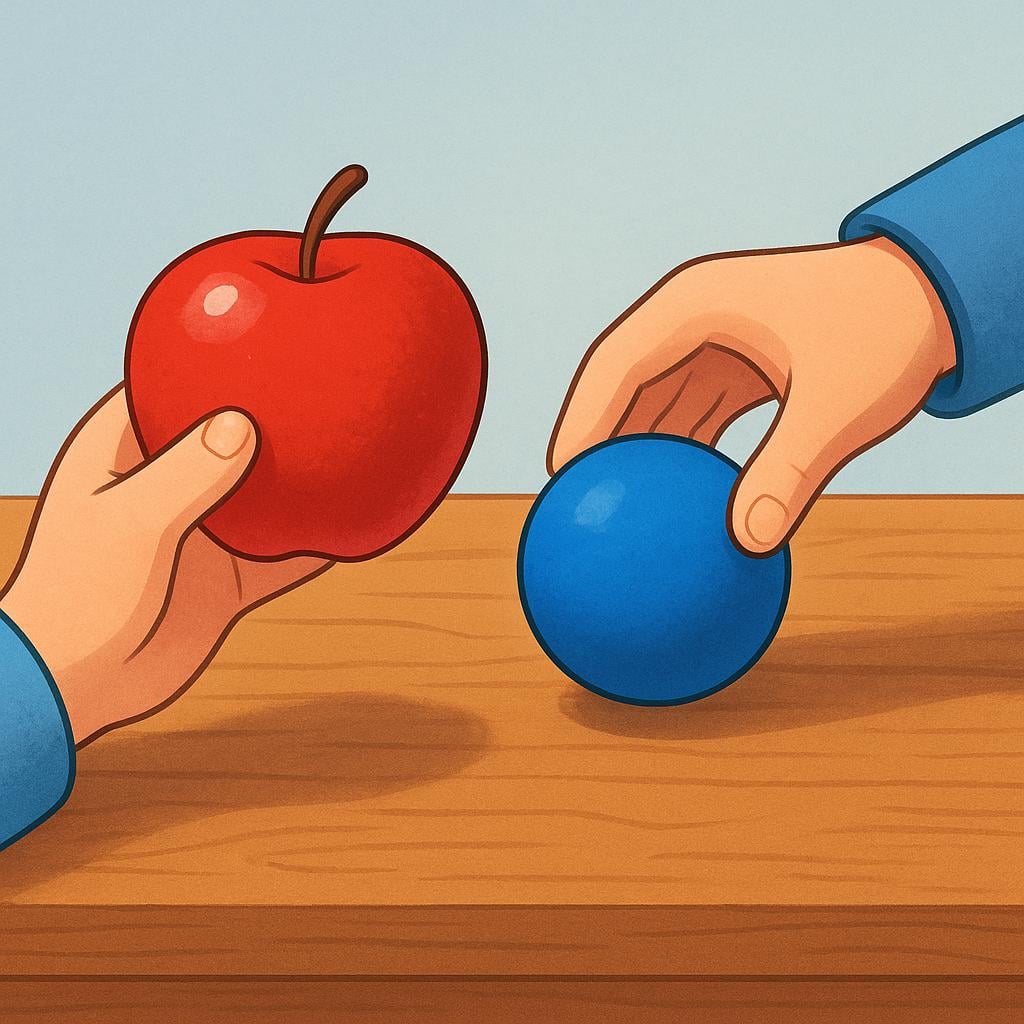cambia
/CAM-bee-ah/
changes

The chameleon cambia (changes) its color to blend in.
cambia(Verb)
changes
?He/She/It changes
,exchanges
?He/She/It exchanges money/items
switches
?It switches mode
📝 In Action
Mi hermana cambia de trabajo cada año.
A1My sister changes jobs every year.
¿A qué hora cambia la guardia en el palacio?
A2What time does the guard change at the palace?
Usted cambia su opinión constantemente.
B1You (formal) change your mind constantly.
💡 Grammar Points
The 'AR' Verb Pattern
'Cambia' is a regular 'AR' verb, meaning its endings are predictable. The pattern 'A' shows up in most of its forms (e.g., cambiamos, cambian).
❌ Common Pitfalls
Mixing up 'cambiar' and 'darse cuenta'
Mistake: "Using 'cambia' when you mean 'realizes' (e.g., 'Él cambia que es tarde')."
Correction: Use 'se da cuenta' for 'realizes.' 'Cambia' is only for physical or conceptual changing, not mental realization.
⭐ Usage Tips
Use 'de' for Topic Changes
When talking about changing a specific topic, like jobs, countries, or topics of discussion, always use the word 'de' (of): 'Cambia de casa' (He changes houses).

A strong hand gesture implies the command, '¡Cambia!' (Change!).
cambia(Verb)
Change!
?Informal command (telling 'tú' to change)
,Exchange!
?Informal command (telling 'tú' to exchange)
📝 In Action
¡Cambia la contraseña inmediatamente!
A2Change the password immediately!
Si hace calor, cambia el termostato.
A2If it's hot, change the thermostat.
Cambia de tema, por favor, ya no quiero hablar de eso.
B1Change the subject, please, I don't want to talk about that anymore.
💡 Grammar Points
The 'Affirmative Tú Command'
To tell a friend ('tú') to do something, you often use the exact same verb form as the 'he/she/it' present tense. This is why 'cambia' works as a command.
❌ Common Pitfalls
Adding 'tú' to commands
Mistake: "Saying 'Tú cambia la bombilla.'"
Correction: Just say 'Cambia la bombilla.' In Spanish commands, the pronoun 'tú' is usually dropped because the verb ending already tells you who the command is for.
⭐ Usage Tips
Negative Commands are Different
Be careful! If you tell someone NOT to change something, you must use a different form: 'No cambies eso' (Don't change that), not 'No cambia eso'.
🔄 Conjugations
indicative
present
imperfect
preterite
subjunctive
present
imperfect
✏️ Quick Practice
💡 Quick Quiz: cambia
Question 1 of 2
Which English sentence correctly uses 'cambia' as a command?
📚 More Resources
Frequently Asked Questions
How do I know if 'cambia' is a statement or a command?
Context and punctuation are your clues! If it's a statement, it usually has a subject ('él/ella/usted') nearby, like 'Él cambia el agua.' If it's a command, it often stands alone or is followed by an exclamation mark, like '¡Cambia eso!'
What is the difference between 'cambia' and 'cambie'?
'Cambia' is the standard form for 'he/she changes' or the informal command ('tú'). 'Cambie' is the form used for the formal command ('usted') or when expressing wishes, desires, or doubts (the special form known as the Present Subjunctive).